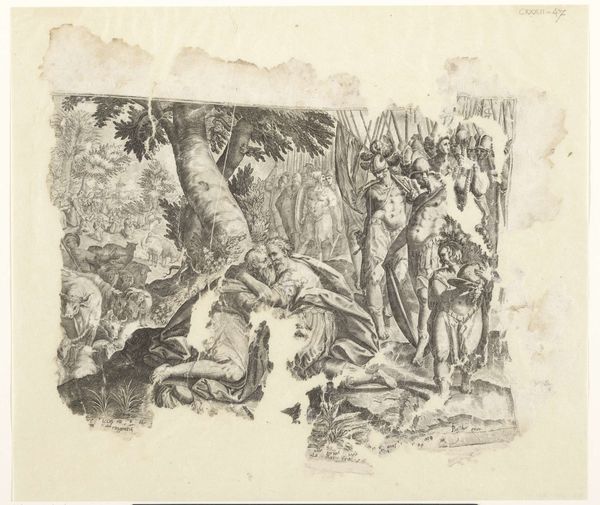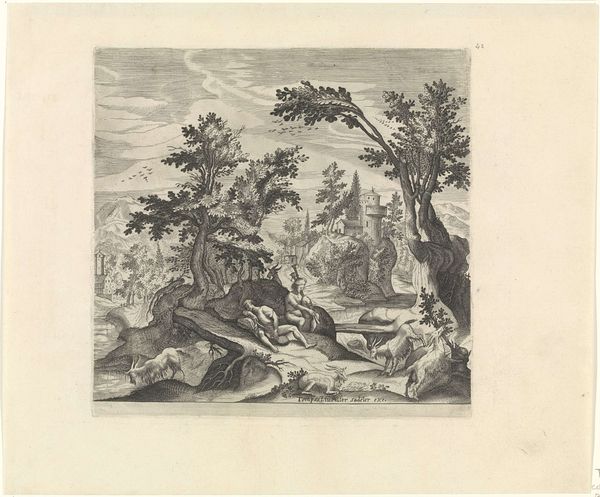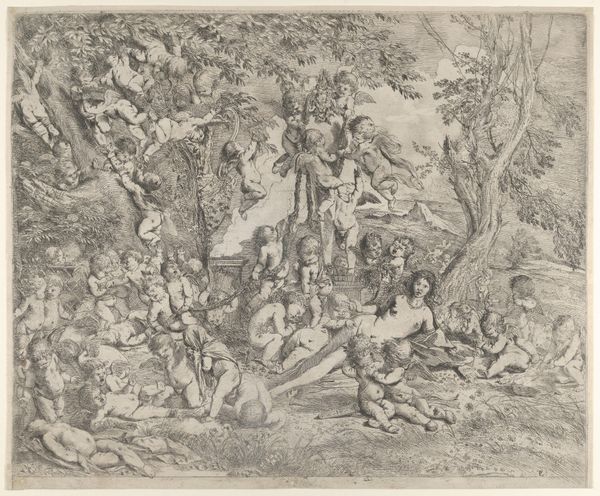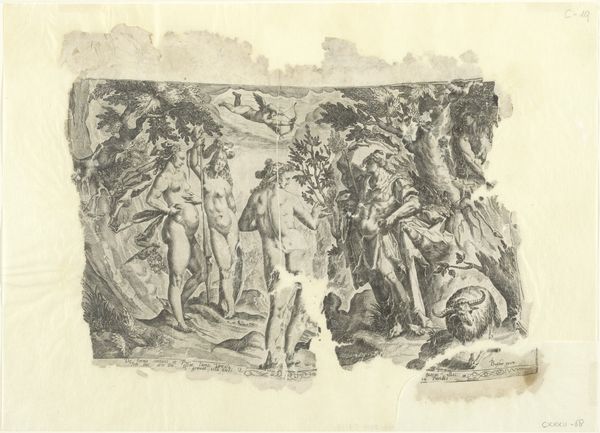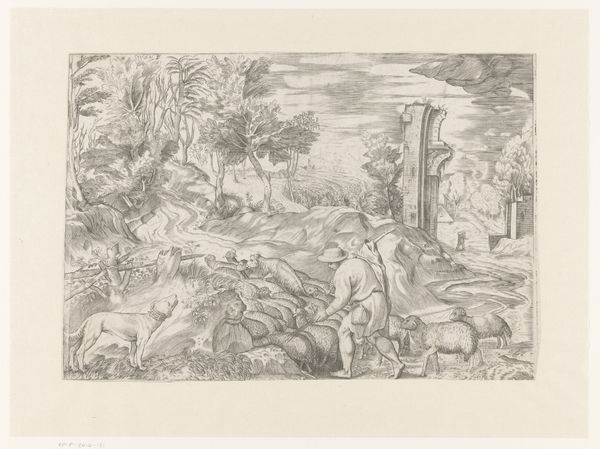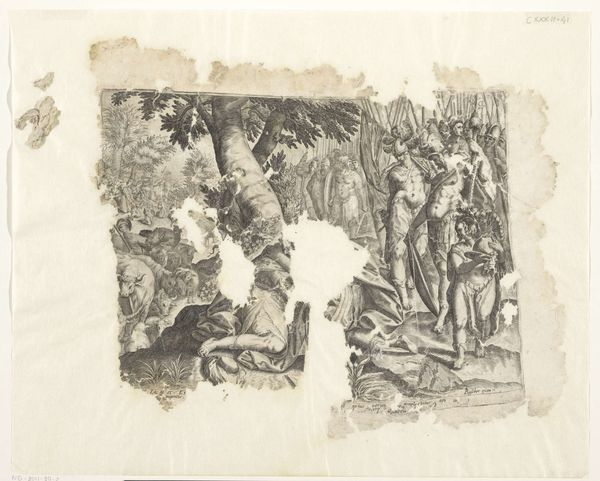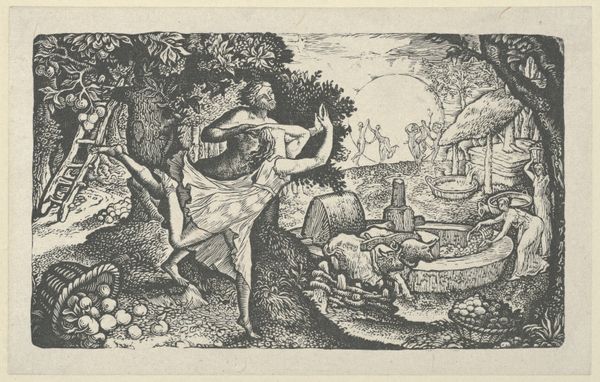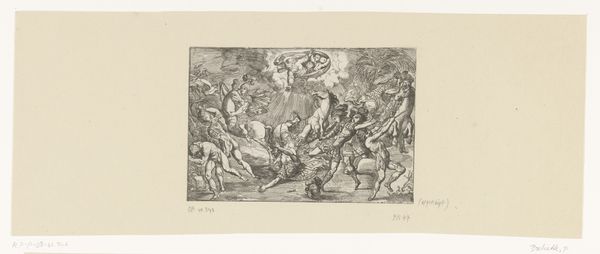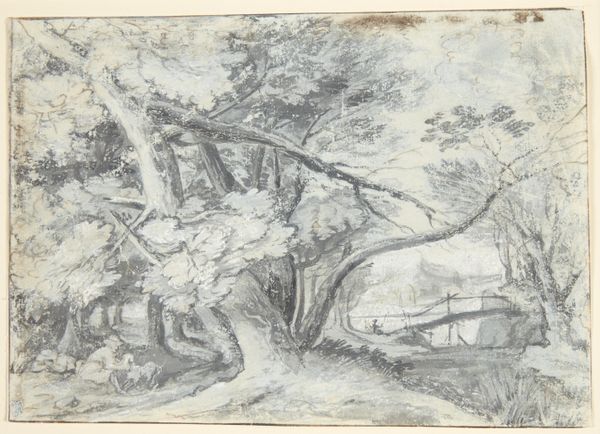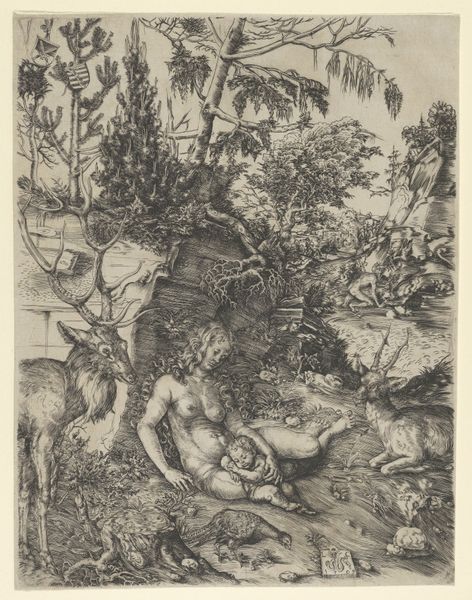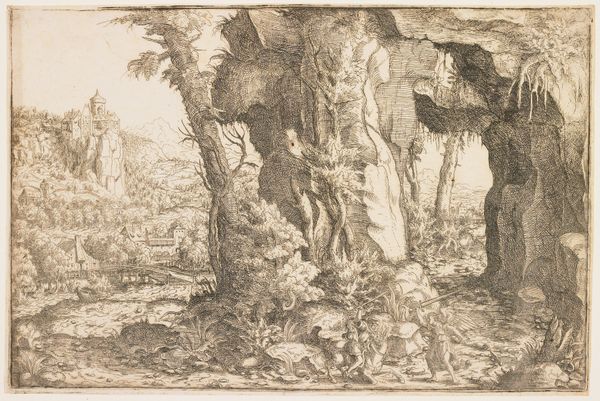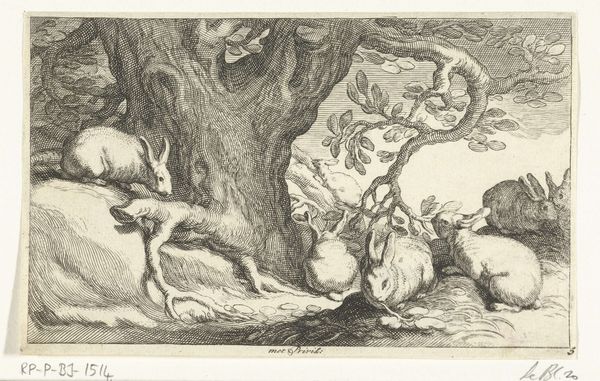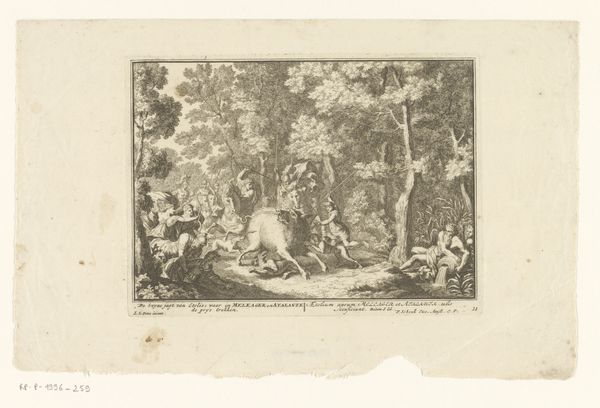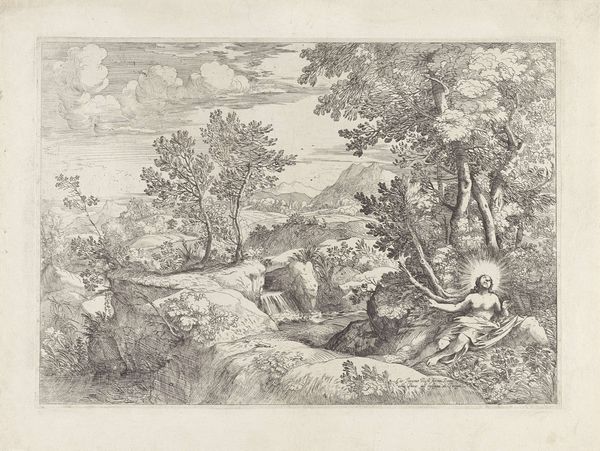
drawing, ink, engraving
#
drawing
#
ink drawing
#
narrative-art
#
figuration
#
ink
#
history-painting
#
northern-renaissance
#
engraving
Dimensions: height 303 mm, width 393 mm
Copyright: Rijks Museum: Open Domain
Editor: This is “Reconciliation of Jacob and Esau,” an ink drawing made sometime between 1580 and 1596 by Zacharias Dolendo. It feels very staged to me, like a theatrical performance frozen in time. What stands out to you? Curator: The embrace is key. In reconciliation scenes, embrace is both the emotional climax and a visual metaphor. In this Northern Renaissance engraving, what meanings are embedded in this return to brotherly love? Editor: Meanings? Well, it seems to be the resolution of a conflict. Curator: Indeed. Think about the story. Jacob deceived his blind father, Isaac, to steal Esau’s birthright. What enduring psychological symbolism is captured through this deception? Editor: Perhaps a fractured relationship mended? A rebalancing of power? I am not sure I see any symbols of power... Curator: Look again. Notice the contrast between the two groups behind the embracing figures: Esau’s armed men versus Jacob’s flocks of animals, a pastoral tribe and the army, a contrast that reinforces Esau's initial strength, perhaps also innocence. Does the iconography imply a warning, a historical perspective or aspiration of the time? Editor: So, Jacob’s material wealth isn't just a sign of prosperity; it symbolizes his...victory? Or perhaps Dolendo hints that the power of material gains could be the source of conflicts? Curator: It underscores the shifting dynamics of wealth and power but also offers hope through reconciliation. That’s the compelling thread that ties all these images together. A collective need, even now, perhaps? Editor: That's given me a lot to consider. I now perceive deeper layers in what seemed at first like just a historical depiction. Curator: These works speak across time. Symbols reveal a historical narrative that resonate psychologically even now.
Comments
No comments
Be the first to comment and join the conversation on the ultimate creative platform.
